Geotechnical investigations
Geotechnics is the discipline that deals with the study of soil mechanics and its application in the designing of building works.
Geotechnical modeling is the end product of a set of analysis and data that, on the basis of the characteristics and performance of the building and of the results of specific surveys and geotechnical tests, defines and characterizes (physically and mechanically) the structural system formed by the significant volume of soil connected with the structure designed. The definition of these parameters must be derived from an accurate and detailed analysis of the results coming from in situ investigations and laboratory tests.
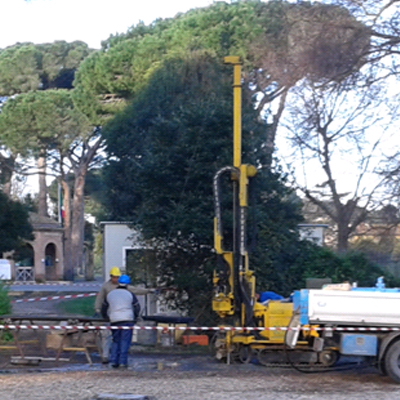
Geognostics
Geognostic surveys represent the most widely used direct subsoil investigation method and allow the soil to be analyzed in depth in order to evaluate its geological and geotechnical characteristics.
In addition to the visual examination of the cores taken on which some rapid parameters are normally measured, during drilling, and subsequently having equipped the holes appropriately, it is possible to carry out a series of tests in the hole which may be of a geotechnical nature , geophysical and hydrological (for example pressometric tests, dilatometric tests, Lefranc tests, Lugeon tests, inclinometric tests, Down – Hole and Cross-Hole seismic, electrical logs etc.).
It is also possible to take samples with conservation techniques of the physical characteristics intended for geotechnical laboratory tests.
The holes made are frequently used for the installation of piezometers (Norton, Casagrande) for monitoring the groundwater level.
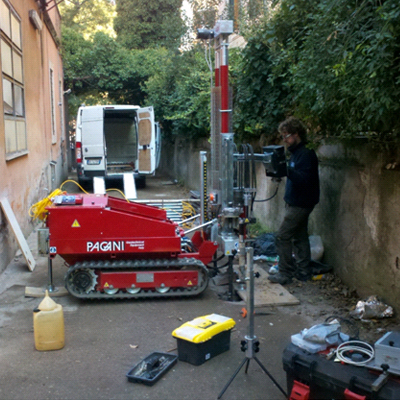
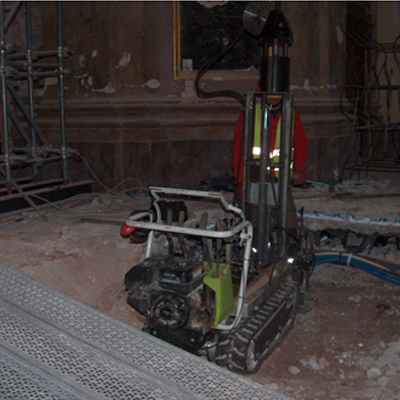
Penetrometric tests
Penetrometric tests consist of driving a conical tip into the ground to determine its geotechnical characteristics. Depending on the technique used for insertion, they are divided into dynamic or static penetrometric tests.
Dynamic penetrometric tests use a striking mass of known and standardized weight and height of fall. The number of blows necessary to penetrate the conical tip into the ground of a predefined section is used, through empirical formulas, to obtain the main geotechnical parameters.
Depending on the weight of the striking mass, light, medium, heavy and super-heavy penetrometers are distinguished.
In static penetrometric tests (CPT), the insertion of the tip occurs through a thrust which allows a constant advancement speed. In this test, tip resistance and lateral friction are measured continuously.
Through special pressure transducers (piezocones) it is possible to measure the interstitial pressure (CPTU).
The insertion of piezocones equipped with accelerometers allows the measurement of the velocity of seismic pulses in P and S waves (SCPTU) in the ground.
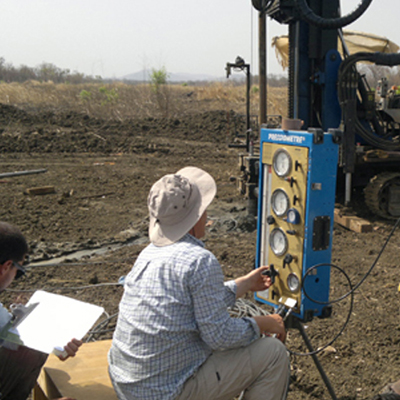
Pressometric Tests
Pressure measurement tests consist of measuring the radial deformations induced in a hole by the expansion of an expandable cylindrical probe, gradually increasing the pressure inside it.
The probe inserted into the ground to be investigated is subjected to a series of pressure increases, which cause its expansion and the consequent deformation of the ground; the change in volume is measured by a volume meter.
From the analysis of the data obtained with the pressometric test (limit pressure and pressometric modulus) it is possible to measure the modulus of deformability and the resistance of a large variety of soils and weathered and/or soft rocks (i.e. characterized by modest values of resistance to uniaxial compression).
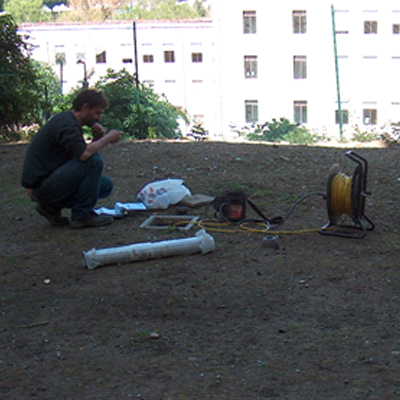
Inclinometer Measurements
Inclinometer monitoring essentially consists in periodically measuring the horizontal displacements of the ground along a vertical with respect to a system of three-dimensional axes.
For this purpose, a probe equipped with sensors capable of measuring variations in inclination is used. This probe is slid inside a vertical guide tube previously installed in the ground. The differences in inclination between the probe axis and the vertical axis are thus detected. The base of the tube is considered stationary.
Inclination readings are taken at regular depth intervals.
The processing of the data collected and the comparison with the measurements previously carried out allows us to identify the horizontal movements of the ground, the extent of the movements and the depth at which these movements occur.
In the case of monitoring with frequent and continuous measurements, fixed inclinometers (clinometers) connected to automatic data recording and transmission systems are also installed.
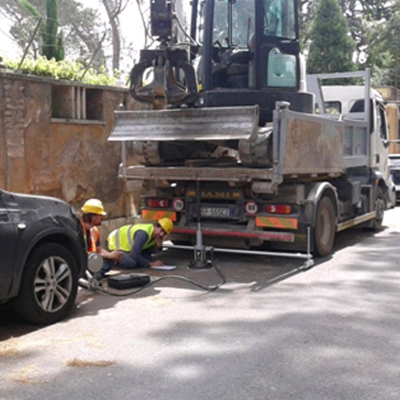
Plate load tests
The test consists of loading a rigid circular plate in successive steps, well resting on the surface of the ground under test, and measuring the settlements corresponding to the different loading steps. The aim is to evaluate the deformability characteristics of the soil and its load-bearing capacity.
The loads are transmitted to the plate through the application of a force produced by a hydraulic thrust system. The deformations induced in the ground are detected using centesimal comparators integral with a reference system external to the area of influence of the applied load.
The loads are applied in successive steps (loading and unloading sequences) and until the breaking load of the soil is reached.
The test provides data for calculating the compressibility modulus and its applicability is valid on any type of soil or rock.
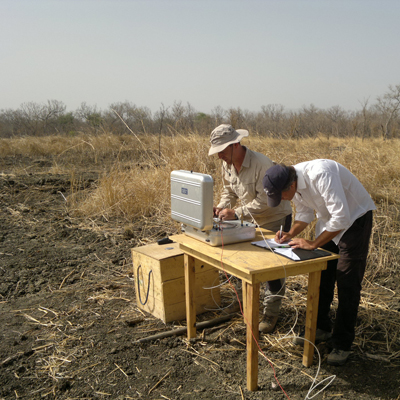
Marchetti dilatometric tests
The DMT test consists in the dilation, by sending gas under pressure, of a flat circular membrane with a diameter of 60 mm, located on the face of a blade with a thickness of 14 mm and a width of 95 mm, which is inserted into the ground by static thrust, acting on a battery of rods. The penetration of the blade is stopped every 200 mm to carry out the test.
During the test, the pressure corresponding to the first displacement of the membrane and that corresponding to a pre-set displacement of 1.1 mm are measured. From these measurements it is possible to determine, through correlations, information on the tensional history of the deposit and on the deformability and resistance characteristics.
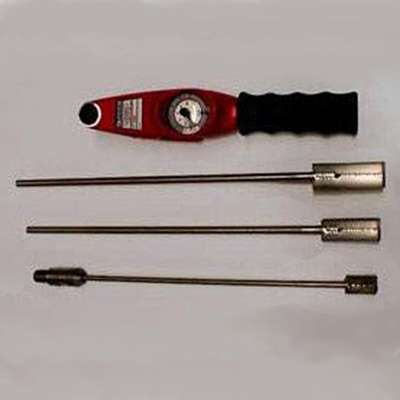
Vane Test scissometric tests
The scissometric test is carried out in soft cohesive soils to determine the undrained cohesion. It can be performed in the field, on the wall or at the bottom of excavations, or in the laboratory on a suitably confined sample. It consists of the measurement of the torque that must be applied to a tool made up of four vertical fins orthogonal to each other to cause the breaking of the ground along the cylindrical surface that envelops the fins. Keep the tool rotating at a speed of 0.1 – 0.2 degrees/ s, i.e. (6 – 12 degrees/min). Subsequently, the rotation of the paddle can be continued for a few revolutions until the soil is completely reworked, measuring the residual shear resistance of the soil itself after large deformations
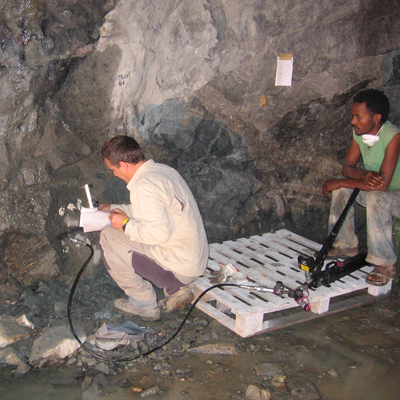
Flat jacks
The test with flat jacks is carried out on excavation walls or tunnels and consists of inserting a flat jack into a crack made in the rock and making it expand until the tension conditions prior to cutting the crack are restored, measuring the necessary effort.
This pressure will be considered equal to the initial tension of the rock, before excavating the crack, in the direction perpendicular to the flat jack. During the test, the applied pressures and induced deformations are recorded, on the basis of which the elastic deformation modulus of the rock mass is obtained.
